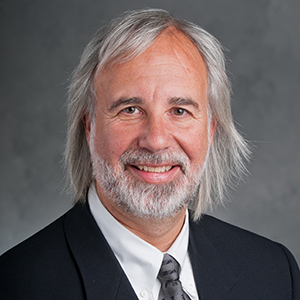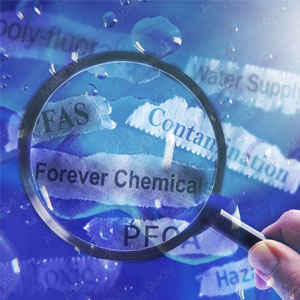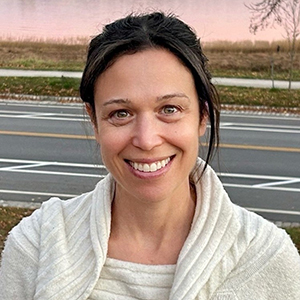By combining nanotechnology with antiviral substances, researchers have developed new synthetic membranes that can deactivate the SARS-CoV-2 virus responsible for the COVID-19 pandemic. These sophisticated materials also filter the virus from indoor air, which together may help reduce the transmission of SARS-CoV-2 and other viruses, say the researchers.
Masks made from this new material could block up to 98% of virus particles, outperforming the gold standard N95 masks, according to findings published May 24 in the journal Communications Materials.
 From right to left: SRP trainee and lead author on the antiviral membrane study Rollie Mills, Bhattacharyya, and colleague Lindell Ormsbee, Ph.D., in the lab. (Photo courtesy of the University of Kentucky SRP Center)
From right to left: SRP trainee and lead author on the antiviral membrane study Rollie Mills, Bhattacharyya, and colleague Lindell Ormsbee, Ph.D., in the lab. (Photo courtesy of the University of Kentucky SRP Center)The project, funded by the NIEHS Superfund Research Program (SRP) and the National Science Foundation Rapid Response Research program, builds on the team’s earlier SRP-funded research(https://tools.niehs.nih.gov/srp/programs/Program_detail.cfm?Project_ID=P42ES0073805742) to develop membranes that remove hazardous chemicals from water.
How it works
The membranes contain nano-sized pores that can be manipulated into different sizes and thickness, creating a spongy structure that captures coronavirus-sized particles. In addition, the new membranes are coated with antiviral enzymes that effectively neutralize the virus.
“The novel coronavirus is covered in club-shaped ‘s-protein’ spikes, which give it its crownlike appearance,” said senior author Dibakar Bhattacharyya, Ph.D.(https://tools.niehs.nih.gov/srp/people/details.cfm?Person_ID=4369), of the University of Kentucky (UK) SRP Center(https://tools.niehs.nih.gov/srp/programs/Program_detail.cfm?Project_ID=P42ES007380), in an NIEHS Story of Success. “The protein spikes allow the virus to enter host cells once in the body. This new membrane includes enzymes that attach to the protein spikes and deactivate them, killing the virus.”
In earlier work, the group confirmed that their hollow fiber membranes filter coronavirus particles from indoor air. Now, they have demonstrated that the membranes out-perform currently used masks and quickly disable SARS-CoV-2.
“Our membranes show more than 98% filtration efficiency,” said Bhattacharyya. “Even without the antiviral enzymes, the membranes provided a protection factor many times higher than the Occupational Safety and Health Administration’s standard for N95 masks. Adding the enzyme can deactivate the virus within 30 seconds.”
The team estimated that masks derived from this material would be similar in cost to traditional N95 masks, but could be used effectively for several days, reducing the amount of waste ending up in landfills. According to the scientists, their specialized membranes may offer critical tools to reduce the spread of infection and protect human health during this and future pandemics.
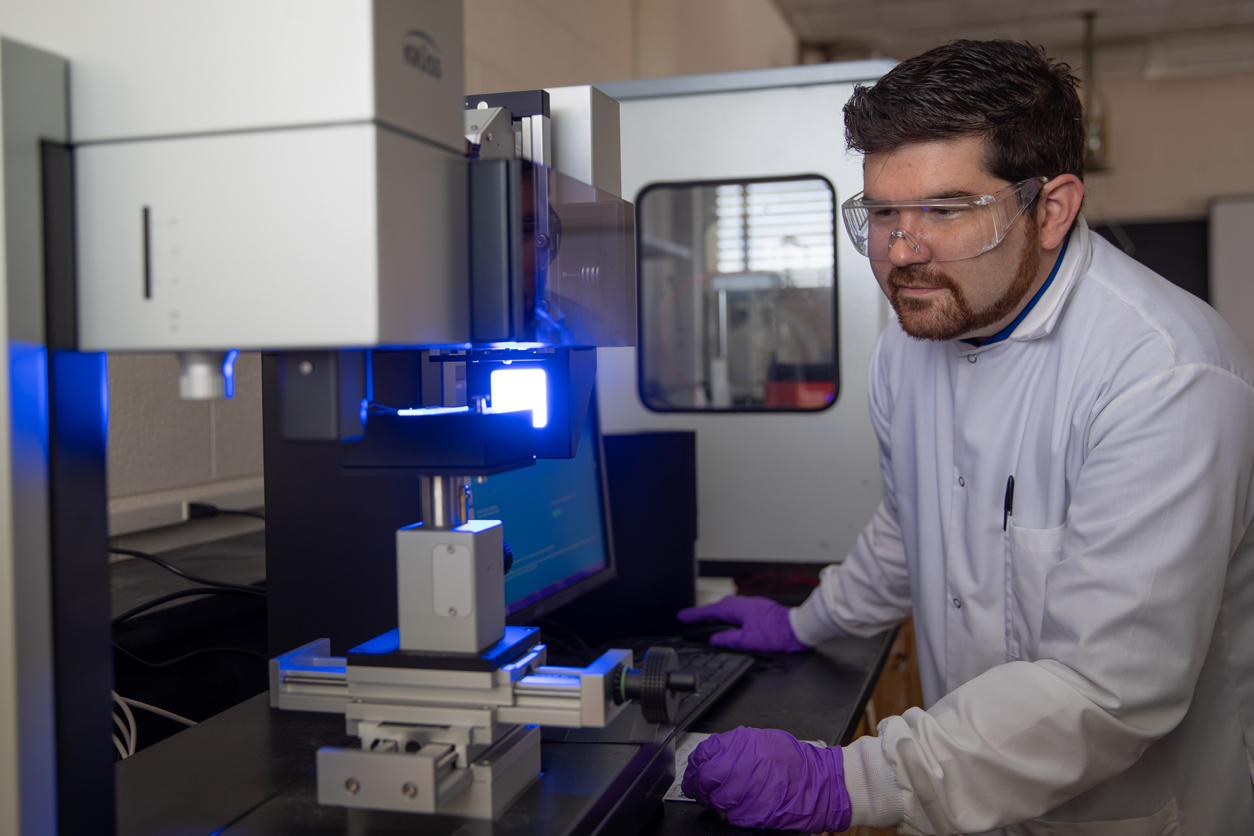 SRP post-doctoral fellow Kevin Baldridge, Ph.D., lead author of the indoor air filtration study, in the lab. (Photo courtesy of the University of Kentucky SRP Center)
SRP post-doctoral fellow Kevin Baldridge, Ph.D., lead author of the indoor air filtration study, in the lab. (Photo courtesy of the University of Kentucky SRP Center)Pivoting to address emerging threats
Bhattacharyya, who has been funded by NIEHS for over 20 years, and his research team are well-known for designing innovative materials to capture pollutants and break them down into non-toxic forms.
For example, they have created specialized membranes integrated with iron-based nanoparticles to capture chlorinated contaminants, like trichloroethylene (TCE) and carbon tetrachloride, as well as membranes with engineered polymer materials to remove perfluorooctanoic acid, or PFOA. According to the researchers, their re-usable technologies offer cost-effective strategies for cleaning up contaminants in the environment.
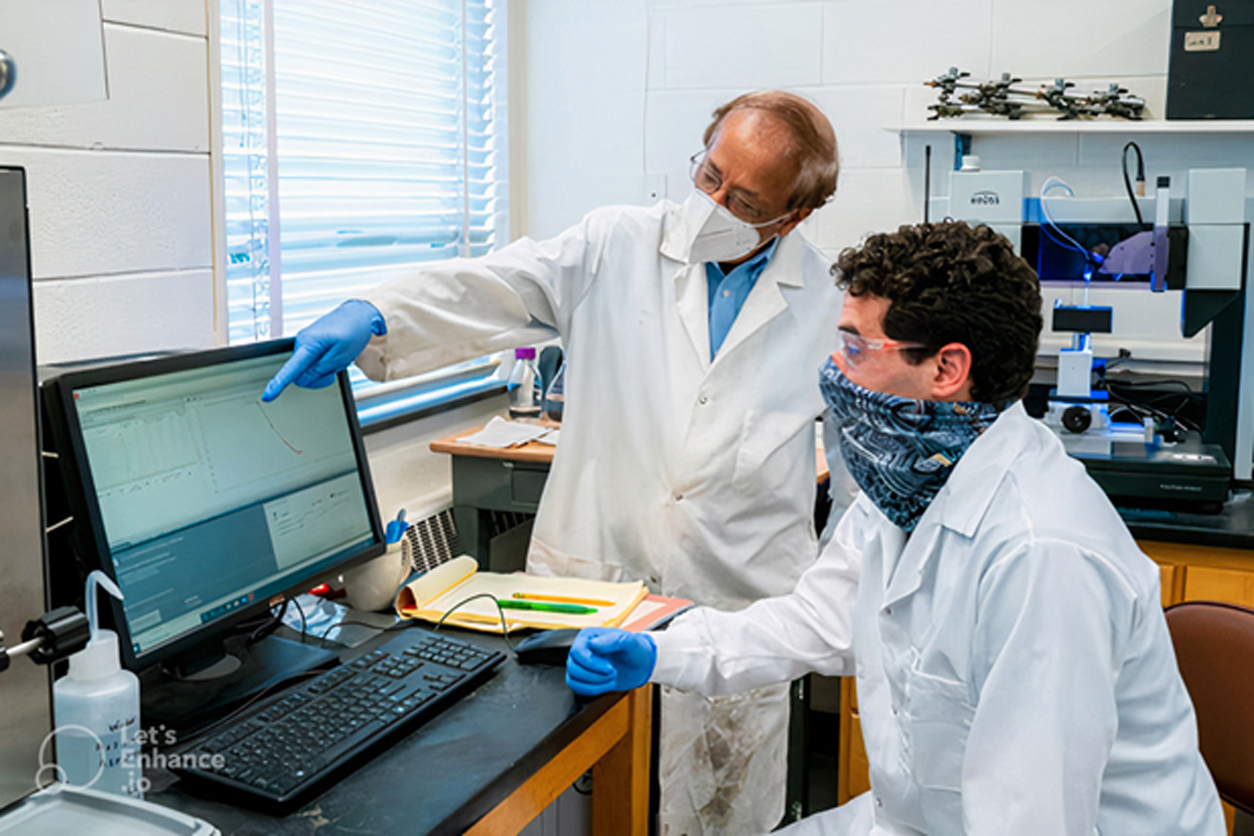 Bhattacharyya, left, and SRP trainee Francisco Leniz designing functionalized membranes to trap per- and polyfluoroalkyl substances in water. (Photo by Ben Corwin, courtesy of the University of Kentucky SRP Center)
Bhattacharyya, left, and SRP trainee Francisco Leniz designing functionalized membranes to trap per- and polyfluoroalkyl substances in water. (Photo by Ben Corwin, courtesy of the University of Kentucky SRP Center)“At the UK SRP Center, we interact with top investigators from different disciplines, collaborating with faculty and students in toxicology, nutrition, and health,” said Bhattacharyya. “This allows us to expand on traditional membranes and water treatment technologies to do something new and exciting.”
By leveraging decades of experience and expertise across disciplines, the team was able to quickly pivot to develop membranes that could tackle the coronavirus. This approach could enable them to continue to address new and emerging public health challenges.
'SRP's multidisciplinary approach is designed to encourage innovative thinking while promoting collaborations and infrastructure that give our grantees flexibility to address emerging problems,' said Heather Henry, Ph.D., Health Scientist Administrator with the NIEHS SRP. 'The UK SRP Center team is a prime example of this nimbleness in action.'
Citation: Mills R, Vogler RJ, Bernard M, Concolino J, Hersh LB, Wei Y, Hastings JT, Dziubla T, Baldridge KC, Bhattacharyya D. Aerosol capture and coronavirus spike protein deactivation by enzyme functionalized antiviral membranes. Commun Mater 3, 34 (2022). https://doi.org/10.1038/s43246-022-00256-0.
(Adeline Lopez is a science writer for MDB Inc., a contractor for the NIEHS Superfund Research Program.)





